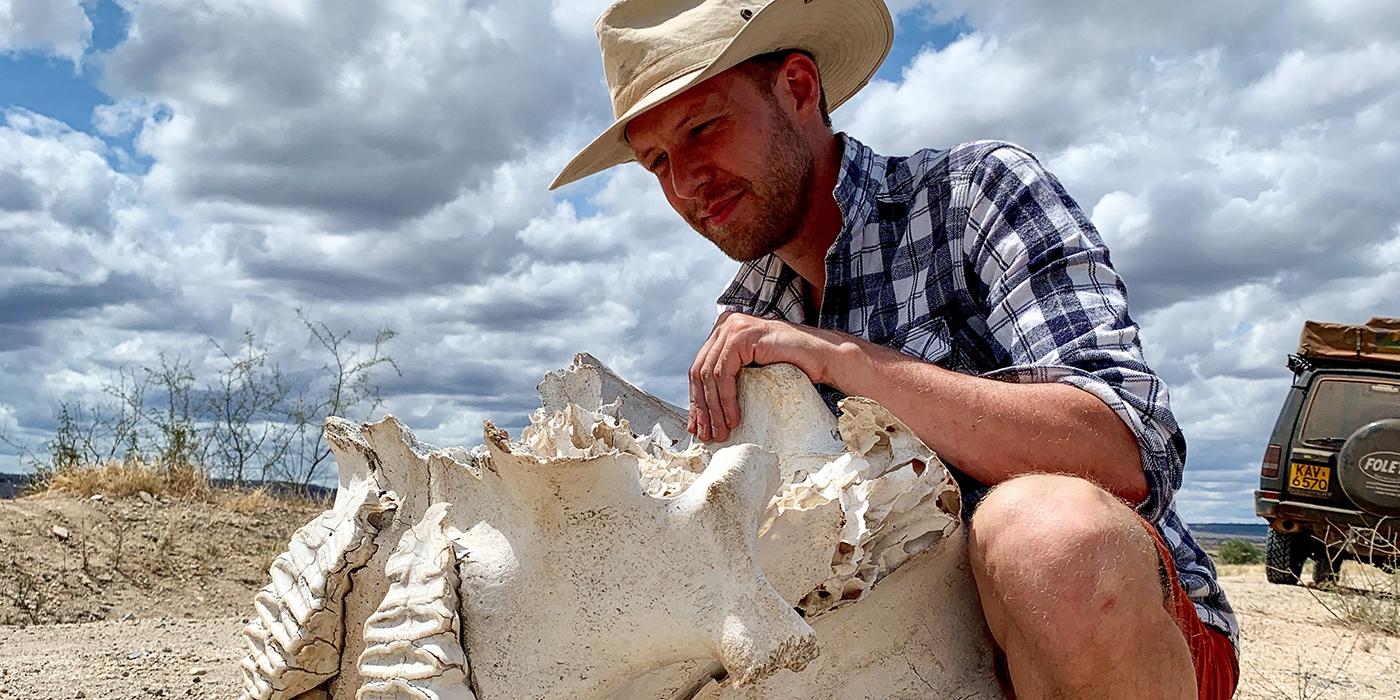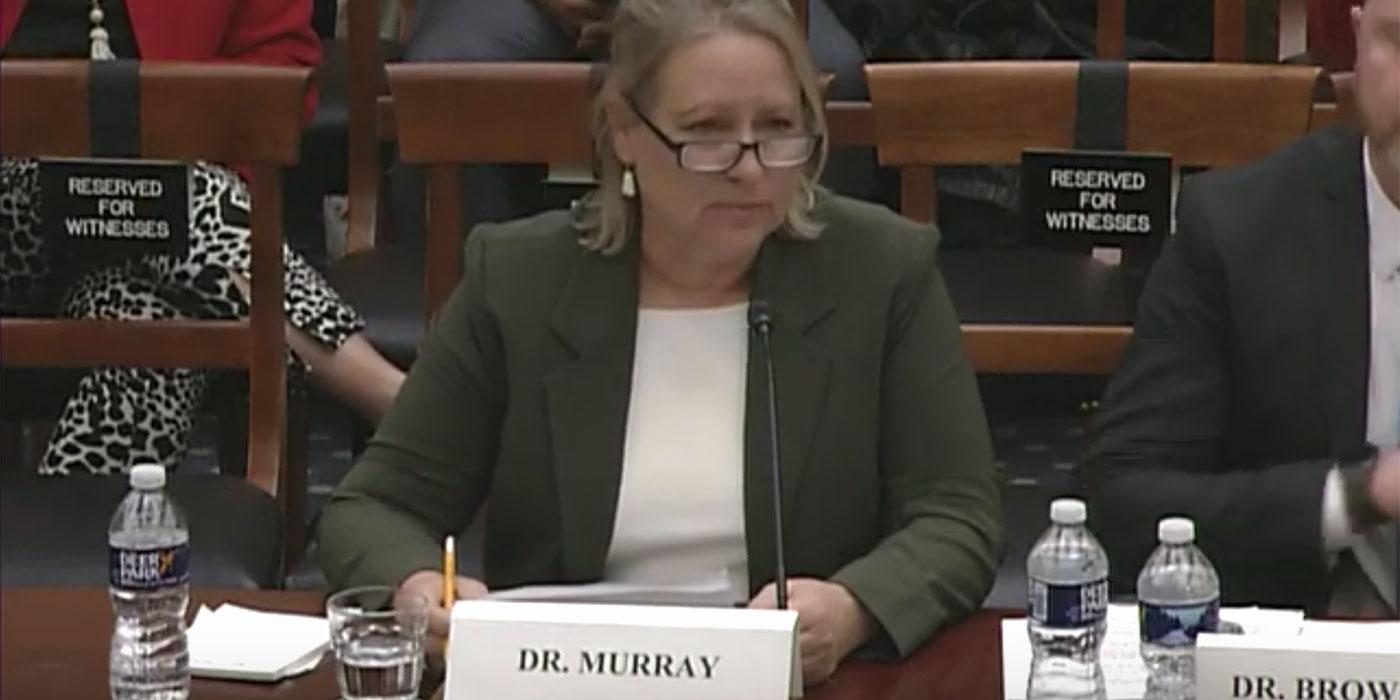Smithsonian Global Health Director Delivers Government Testimony on Zoonotic Diseases
Principles for Outbreak Investigation: Covid-19 and Future Infectious Diseases

Dr. Suzan Murray, D.V.M., D.A.C.Z.M., director of the Smithsonian Global Health Program at the Smithsonian's National Zoo and Conservation Biology Institute gave the following testimony before the House Committee on Science, Space, and Technology Subcommittee on Investigations and Oversight at the U.S. House of Representatives on Wednesday July 14, 2021.
Chairman Foster, Ranking Member Obernolte, and Members of the Subcommittee, thank you for calling this hearing, and inviting me to participate. My name is Suzan Murray, and I am the Director of Smithsonian’s Global Health Program, based out of the National Zoological Park and Conservation Biology Institute. This program utilizes experts in wildlife medicine, human medicine, public health, conservation biology, epidemiology, virology and molecular biology to study and respond to issues emerging at the human/animal interface. Recognizing that human health, wildlife health, and environmental health are inextricably linked, we utilize a multidisciplinary approach to investigate emerging infection diseases that threaten both human and animal life, and we build in country capacity and train the next generation of health specialists.
Determining the origins of a virus is difficult, but ongoing identification of novel viruses can improve and expedite the process. With a robust sample collection, we can more precisely determine how the virus in question is genetically related to known variants. This can tell us much about the geographic location, host species, and time period over which the virus may have evolved. We learn a great deal of information from the data collected from free-ranging species — particularly bats, primates and rodents — and expanding this data set exponentially is the most critical opportunity we have to better understand the origins of a particular virus. Over the past decade, as part of a larger consortium, we have worked in more than 30 countries and discovered over 100 novel mammalian viruses. Analysis of these viruses has determined that they represent less than 1% of existing viruses. While this is a critical data set, to more fully understand the origins and evolution of these viruses, continued sampling at an increasing rate is needed to round out this data set.
If genetic quality of virus extracted from samples is sufficient, and the virus maps genetically to other well-sampled viruses, it is sometimes possible to conduct a ‘time-scaled’ phylogenetic analysis, allowing an estimation of the period of time over which the virus is likely to have evolved.
Which species is the most likely to be the reservoir host is a complicated question. From previous research we know that bats, primates, and rodents are the most likely to harbor emerging viruses of zoonotic potential, but they are not the only species able to do so. In fact, domestic livestock are responsible for most cases of zoonotic viral transfer to humans.
The genetic analysis described above, along with geographic information collected from the outbreak, can guide targeted bio surveillance in animals. In addition, the advent of new machine learning techniques may be able to help elucidate the proximal host species in which the virus may have evolved. Additionally, virus culture and experimental infection studies under laboratory settings can be used to determine the host range outside of humans.
Determining where a spillover occurred and from what species is only part of the story. Did the spillover occur directly from the wildlife reservoir species to humans? or was another intermediate species (e.g., livestock) involved? Often, another host that is not necessarily a ‘reservoir’ for the pathogen will be responsible for direct transmission to humans. Since the pathogen may not have evolved within this ‘bridge’ host, genomic methods are not always sufficient to identify the species responsible for direct transfer to humans.
Wild animals don’t seek out human interaction, so we must also determine the human-drivers that brought people into contact with a new virus. Possible examples include wildlife trade, habitat destruction and encroachment, and other practices.
The variety of factors underscores the need to develop a multidisciplinary, systematized, transparent and cooperative community that includes not only wildlife veterinarians, physicians, virologists, but ecologists, human behavioralists and public health leaders among others, who must work hand in hand to develop and analyze approaches to data collection and protocols for sharing critical information.
Some of this work is already underway now between multiple agencies and organizations. Additional coordination could further improve our ability to react to the next pandemic.
Orchestrating this kind of coordination is not easy. Managing across governments, researchers, and impacted communities is a huge undertaking with no one organization charged with ensuring that coordination. Even where there is commitment to work together, differences in how different places operate can add difficulty. Principles for transparency and data access range and vary from community to community based upon several factors including but not limited to shared trust on how data will be interpreted, utilized, and credited. In addition, there are costs to consider to the groups that spent the time and resources to collect the data up front.
These are complex systems to navigate and even more difficult when such efforts cross work groups, communities, or national borders. There are obvious reasons why data is most useful when shared openly and rapidly and there should be a strong focus on developing protocols in which all parties are encouraged and incentivized to contribute to shared data sets prior to the initiation of data collection, perhaps by engaging a neutral third party to coordinate and promote transparent and rapid sharing of laboratory-based and epidemiological data within and across national boundaries.
Even in a scenario where all the necessary global treaties are in place to enable timely and accurate data sharing, that will not matter if we cannot collect good data on the ground. This is only achieved through the committed and ongoing work to build trust with the communities in spillover hotspots. In addition to trust, creating and supporting the in-country communities with which we work presents a real opportunity to not only address the current pandemic but avoid future outbreaks. Our international exchange training and capacity building programs bring together experts from different countries to facilitate shared knowledge exchange and provide an avenue to have a more robust and sustainable impact.


